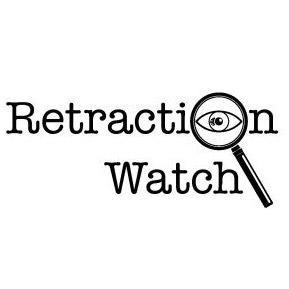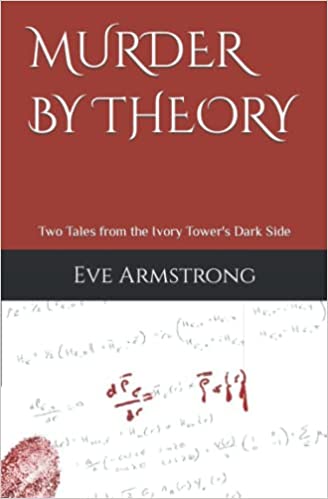Dear Retraction Watch reader:
Sometime this week or early next week, we will publish our 6,000th post. That means we’ve averaged nearly 500 per year since we launched a bit more than 12 years ago.
Wow.
And yet that’s not nearly all we do here at Retraction Watch. We — and by that I mean our researcher Alison Abritis and a small but very merry band of freelancers — maintain the most comprehensive database of retractions available. That database, which at last count contains more than 37,000 retractions, is now used by three leading reference managers — EndNote, Papers, and Zotero — to power their retraction alerts, and has been the basis of scores of scholarly papers.
Category: RW announcements
Why misconduct could keep scientists from earning Highly Cited Researcher designations, and how our database plays a part
Retraction Watch readers are likely familiar with Clarivate’s Highly Cited Researcher (HCR) designation, awarded to “who have demonstrated a disproportionate level of significant and broad influence in their field or fields of research.” And they might also recall that researchers whose work has come under significant scrutiny — or even retracted — can sometimes show up on that list.
As of this year, that is less likely to happen, thanks to a change Clarivate announced today along with the list of nearly 7,000 HCRs:
This year Clarivate partnered with Retraction Watch and extended the qualitative analysis of the Highly Cited Researchers list, addressing increasing concerns over potential misconduct (such as plagiarism, image manipulation, fake peer review). With the assistance of Retraction Watch and its unparalleled database of retractions, Clarivate analysts searched for evidence of misconduct in all publications of those on the preliminary list of Highly Cited Researchers. Researchers found to have committed scientific misconduct in formal proceedings conducted by a researcher’s institution, a government agency, a funder or a publisher are excluded from the list of Highly Cited Researchers.
We asked Gali Halevi, director of the Institute for Scientific Information at Clarivate, to answer a few questions about the change.
What prompted Clarivate to add a check for potential misconduct among Highly Cited Researchers this year?
Continue reading Why misconduct could keep scientists from earning Highly Cited Researcher designations, and how our database plays a partDeceptive Academic Journals: An excerpt from The Predator Effect
Predatory journals — even the term is controversial — have been a vexing problem for many years, and have certainly been a subject of coverage at Retraction Watch and elsewhere. We’re pleased to present an excerpt a new book, The Predator Effect: Understanding the Past, Present and Future of Deceptive Academic Journals, by longtime publishing industry observer Simon Linacre. The citations in the text can be found in the book, which is available open access.
The problems facing authors with regard to predatory journals can be summed up with the plight of an academic this author met in Kuwait in the mid- 2010s. Under pressure from his institution to publish in English-language journals, he submitted, paid for, and published an article in a journal that he subsequently discovered to be predatory. In panic, he asked his superior what he should do, and the sympathetic senior academic advised he should publish the article again in a different, more reputable journal.
Not understanding the problems associated with dual publication, he duly submitted the article again, which was published by the second journal. Problem solved, or so he thought, until a certain publishing executive gave a presentation at his institution and described the breach of publication ethics surrounding the submission of the same article to two different journals.
The moral of this story? Well, for one, authors should be very much aware of all aspects of publication ethics, which, despite their importance and career-threatening consequences, are rarely taught in any depth at even the most research-intensive universities. However, even if adequate training were given to all postgraduates as potential authors, many would still fall for predatory scams and may even be alerted to the attractiveness of guaranteed publication in a matter of days for just a few hundred dollars.
Continue reading Deceptive Academic Journals: An excerpt from The Predator EffectHappy 12th birthday, Retraction Watch: And what a year it was
Every year in the days leading up to August 3 – our birthday – we find some time to review where we’ve been and where we’re going. We often start with the very first post we published on August 3, 2010.
That post begins with a mention of Anil Potti – remember him? – and the first comment is from one Ed Yong. “This sounds excellent and I look forward to the posts,” Yong wrote in a characteristically encouraging note. Yong has of course gone on to become one of the world’s most eloquent and well-known science journalists, winning a Pulitzer last year for “lucid, definitive pieces on the COVID-19 pandemic.”
We did not win a Pulitzer in 2021, or 2022, or any other year, for that matter. Given our narrow focus and approach to stories, the likelihood of that moving forward seems to lie somewhere between zero and nil. That’s just fine.
But on this, our 12th birthday, we find plenty to celebrate. The virtual party started early, when our co-founder Ivan Oransky published a World View column in Nature yesterday. “Retraction Watch has seen the retraction process change dramatically over the past decade,” Ivan wrote, reflecting on what we’ve learned over the last 12 years. “We’ve come to feel that the community is falling short.”
We’ll focus on the past 12 months, as is our wont. Some highlights, in no particular order:
Continue reading Happy 12th birthday, Retraction Watch: And what a year it wasWant to know whether that journal is scamming you? Introducing the Retraction Watch Hijacked Journal Checker
Have you heard about hijacked journals?
Hijacked journals mimic legitimate journals by adopting their titles, ISSNs, and other metadata. Usually, hijacked journals mirror legitimate journals without permission from the original journal. In rare instances, publishers will buy rights to a legitimate journal but continue the publication under considerably less stringent publishing protocols and without clearly noting to the reader the change in ownership or publication standards (sometimes known as “cloned” journals).
Scholars can be duped into publishing in hijacked journals – many of which require fees – by offers of fast publication and indexing in databases such as Scopus; being indexed in such databases is viewed by many universities and governments as a mark of legitimacy. Even the WHO’s COVID literature database has been fooled.
We’re hoping to put an end to that sort of thing: Introducing the Retraction Watch Hijacked Journal Checker.
Continue reading Want to know whether that journal is scamming you? Introducing the Retraction Watch Hijacked Journal CheckerWhat we’ve learned from public records requests. Please help us file more.
Dear Retraction Watch reader:
You may have noticed an increasing number of posts over the past few years that contain the phrase “obtained through a public records request.” Some examples:
- It’s how we learned that a pharmacology researcher was demoted after a misconduct investigation – and then became chair at another school. That story led to a front-page piece in the New Orleans Times-Picayune.
- It’s how we learned that a Science journal took three years to do anything about a retraction request made by a researcher at the University of Wisconsin-Madison. The case later led to sanctions from the U.S. Office of Research Integrity for the graduate student involved.
- It’s how we learned that a child psychiatrist’s research had been suspended indefinitely after one of her study’s participants had been hospitalized. ProPublica later reported that her university had paid back millions in NIH grants because of the incident and others.
- It’s how we learned that a professor at The Ohio State University had kept a six-figure job for a year after a misconduct finding.
- It’s how we learned that PLOS ONE had failed to retract a paper for three years after a university requested its removal.
- It’s how we learned that a PubPeer comment led the University of Michigan to reopen a misconduct investigation.
Murder by Theory: Tales from the Ivory Tower’s Dark Side
Retraction Watch readers may recall Eve Armstrong’s April Fool’s preprints modeling a potential prom date and proving that it was, indeed, Colonel Mustard with a candlestick. We’re pleased — no fooling, and a few weeks early — to present an excerpt from Armstrong’s new work of fiction, Murder by Theory: Two Tales from the Ivory Tower’s Dark Side.
FACULTY MEETING MINUTES
Department of Physics
Arlington University
Date: 2023 September 5, Tuesday
Time: 11:00 am
Location: 329 Hieronymus B. Cottonfield Hall of Physical Sciences, 4th-floor conference room
Present:
- Ezekiel Gold (Zeek): distinguished professor and department chair
- Simone Amiri: tenured associate professor (19 minutes late)
- Hakim Abargil: associate professor, soon to be tenured
if he doesn’t torpedo his own review(17 minutes late) - Harvey Gadsby: distinguished professor
but you’d never know based on appearance(25 minutes late) - Leon Scharf: postdoctoral fellow
who’s not supposed to attend faculty meetings - Alice Jackson: new assistant professor (25 minutes late)
- Louis Janvier: assistant professor.
Absent:
Agenda:
Determine whether instructors for Physics 109 should agree to normalize the choice of textbook across all sections taught, beginning in the spring semester.
Summary:
I, Louis Janvier (pronounced jan vyé with the stress placed on the second syllable), first-year assistant professor, will record the faculty meeting minutes in the Department of Physics this semester. I am happy to do it. In fact, I volunteered to do it, in order to receive the one credit of teaching release that accompanies the position. Further, my expansive vocabulary, nimble and dexterous fingers, and outstanding aptitude for creative writing instills in me a sense of responsibility to perform the role, as these skills render me more fit for it than any of my colleagues. To be clear, nobody forced me to take this on. Taking these minutes was entirely my choice, as I do not take orders and am not a trained monkey. My colleagues respect me. I have been making unique and creative contributions to this department for nearly one full year.
2021: A review of the year’s 3,200 retractions
2021 was – as is always the case – a busy year at Retraction Watch. How could it not be, with our database of retractions surpassing 30,000 – and then 32,000 – with ten percent happening this year alone?
Oh, and the pandemic. There were 72 retractions on our list of retracted COVID-19 papers when we wrote this end-of-year message in 2020. Today, there are 205.
Perhaps it was scrutiny of pandemic-related scientific claims, or recognition of paper mills and other industrialized fakery as a serious problem, or just gathering momentum as sleuths began to get their due in wider circles, but it did feel as though 2021 was a year in which retractions – and larger issues in scientific integrity – played a big role.
Continue reading 2021: A review of the year’s 3,200 retractions25,000: That’s how many retractions are now in the Retraction Watch Database
We reached two milestones this week at Retraction Watch.
Our database — the most comprehensive source for retractions by a wide margin — surpassed 25,000 retractions. And our list of retracted COVID-19 papers, which we’ve maintained for a year, grew past 100 for the first time.
When we launched Retraction Watch in 2010, we, along with many others, thought retractions happened only dozens of times per year. We were wrong, and soon learned that figures had doubled in the first decade of this century, and that no one was keeping close track. The idea for the database was born several years later.
Readers may recall that when we launched the database in October 2018, it contained 18,500 retractions. That means we’ve found, checked, categorized, and entered some 6,500 retractions in two and a half years. New last year: The ability to include retractions in any language.
Continue reading 25,000: That’s how many retractions are now in the Retraction Watch DatabaseA look back at retraction news in 2020 — and ahead to 2021
Like everyone else, it seems, we here at Retraction Watch are more than ready to put 2020 to bed. It was a bittersweet year to celebrate our tenth anniversary and reflect on what we’ve learned. But the work never stops, so as we’ve done every year since 2010, we’ll take a look at the most notable retractions of the last 12 months, and review some important milestones and events.
Given that journals retracted more than 1,800 papers in 2020, we had plenty of stories from which to choose. However, leading the list would have to be the papers about the pandemic that were pulled for flaws ranging from problematic data to shaky science to absolute wackiness. Indeed, if Covid were an author, it would be fifth on our leaderboard, with 72 so far. We’re certain that’s not the high-water mark for Covid retractions given the haste with which scientists have churned out papers about the disease and the virus behind it.
The intersection of politics and science drew particular attention, such as this paper about race and police killings whose authors triggered an outcry from the right after they called for their work to be retracted. Some journals engaged in an exercise of cupboard cleaning, retracting papers offensive to minorities, women and other groups. As we argued in Wired, critics of this “purging” tended to miss the larger point: the papers deserved to be retracted not just because of their repellent content but because they were scientifically unsound. And best practices for retraction recommend that they not disappear down a “memory hole,” but that they remain online, but marked “RETRACTED.”
Continue reading A look back at retraction news in 2020 — and ahead to 2021






